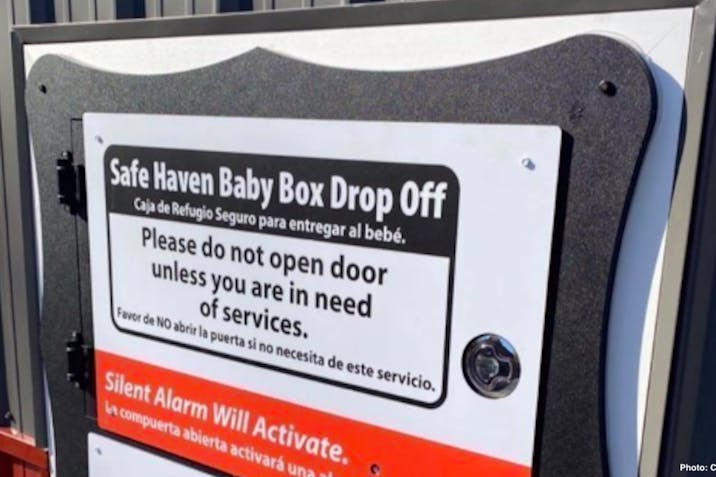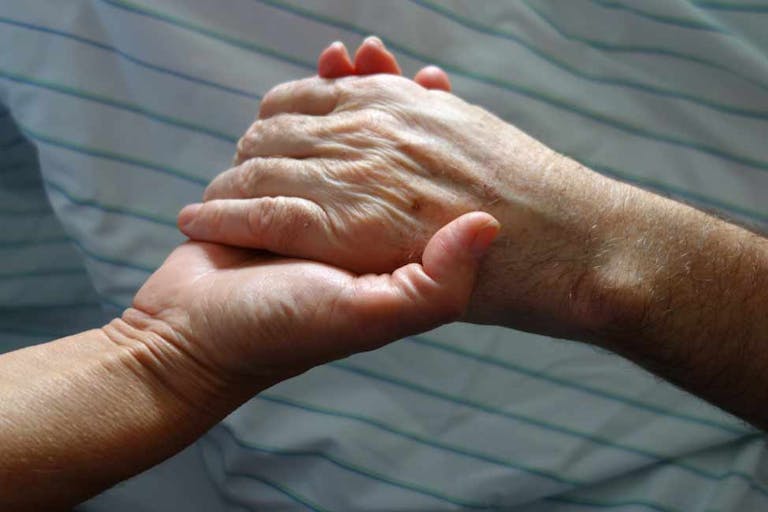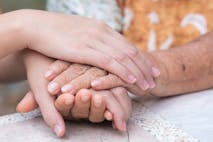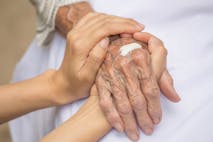
Baby surrendered to safe haven box in Lancaster, PA
Bridget Bosco
·
USA Today article: If you don’t support your loved one’s death, you’re selfish
A recent assisted suicide puff piece from USA Today urges Americans to simply “support” their loved ones in their efforts to end their own lives, arguing that it will help them to better grieve the loss.
It advises that while the topic can be difficult to broach, sick relatives need the support of family caregivers, who should even pick up the deadly prescription for them. If family members are unwilling to support a person’s request for suicide, USA Today accuses them of being “angry” and simply not “ready for their loved one to die.”
The push to expand assisted suicide is built on supposed good intentions and compassion, but it may not be a peaceful way to die at all.
‘Assisted dying’ is discriminatory; it is encouraged for people who are ill or disabled, while suicide is rightly discouraged for others.
USA Today paints a rosy picture of assisted suicide as dignified, peaceful, and painless. The real picture is much more disturbing.
USA Today also portrays individuals opposed to a loved one’s assisted death as selfish, but those supportive of that person’s assisted death as helpful and loving.
Medical assistance in dying — or physician assisted suicide — is making headlines again as legislators in both the UK and New York have passed bills to legalize the practice, though those bills have yet to become law. Many media outlets are choosing to promote assisted suicide as a moral good, and USA Today is among them.
Anita Hannig, author of the book, “The Day I Die: The Untold Story of Assisted Dying in America,” told the outlet, “A lot of patients really express this desire to shield family members from the agony of watching them die, and potentially having them witness a really traumatic or a really burdensome death.”
She said that when family members are not supportive, it is because they might be angry and not ready for their loved one to die. This paints the picture that any family member who does not want their loved one to die by suicide is selfish.
Catie Kelley, policy counsel for Americans United for Life who previously served as a prosecutor for health care fraud sees it much differently. She told USA Today that she worries about patient safety when it comes to legalized assisted suicide. She is concerned that patients will be manipulated by their caregivers into dying when they don’t want to because of a lack of safeguards and mental health evaluations, and ever changing rules concerning who is eligible for assisted suicide.
As for the actual process of dying via a deadly drug cocktail, many claim that it is peaceful and dignified.
Dan Diaz, the husband of Brittany Maynard, who died by assisted suicide, said, “She died in the same way that she lived her life, with grace, compassion and love.” He spent the last months of her life caring for her and contacting clinical trials. He took a leave of absence from work and helped her with her medications, working to ensure that she could “have a good day.”
On the day she took the deadly drugs, she was surrounded by her loved ones, held by Diaz. She took the medications and within five minutes she was in what USA Today calls a “peaceful sleep.” Thirty minutes later, her breathing slowed, and she died.
But not everyone who dies by assisted suicide has a peaceful death as promised.
A 2022 study found that many patients who were prescribed certain drugs for suicide were at risk of a “distressing death.” Reports have indicated that people have literally drowned to death while immobilized by the paralytic drug they are given. To onlookers, they appear peaceful, but inside, they are suffering and unable to move.
A study in the medical journal Anaesthesia found that long, painful deaths from assisted suicide and euthanasia are alarmingly common; a third of patients took 30 hours to die, while four percent took seven days to die.
Additionally, experiments with assisted suicide and euthanasia revealed there is more suffering — with one drug cocktail allegedly “burning patients’ mouths and throats, causing some to scream in pain.”
Since 2013, Oregon has used varying drug combinations meant to induce drowsiness and other symptoms to cause death — most commonly diazepam, which causes sedation; digoxin, which slows or stops the heart and is used in certain methods of abortion; morphine, an opioid; phenobarbital, and amitriptyline, an antidepressant. In the Netherlands and Belgium sodium thiopental — also called thiopental, Sodium Pentothal, thiopentone, or Trapanal — is used in assisted death.
It’s also used to execute prisoners who receive the death penalty.
“Drugs used for medical purposes are required to undergo a stringent approval process in order to assess efficacy and safety,” researchers concluded. “But the drugs being used for ‘assisted dying’ have not undergone such process; the safety and effectiveness of previous and current combinations of lethal drugs is largely unknown.”
It may just be that killing people who are disabled or ill is less costly than caring for them. In fact, a cost estimate report on Canada’s “medical assistance in dying” (MAiD) was submitted to Parliament in 2020 encouraging the expansion of MAiD because it had saved the country’s government nearly $87 million and would “result in a net reduction in health care costs for the provincial governments.” The very next year, Canada’s lawmakers expanded access to MAiD.
In the US, patients have also been offered assisted death instead of legitimate health care treatments as a way for insurance companies to cut costs.
USA Today plants the seed that no one should attempt to talk a loved one out of suicide and spreads the misconception that it is more ‘graceful,’ ‘dignified,’ and ‘peaceful’ to die by suicide if you are ill or disabled. Research shows otherwise.
No loving family member or friend typically supports an able-bodied person in carrying out suicide. People have even been convicted for it. But when a person is ill or disabled, pro-assisted death individuals and organizations have determined that their lives are no longer worth living.
This is not kind, compassionate, or graceful. It’s discriminatory.
One of the main reasons a person requests assisted suicide is to prevent feeling like a burden to their family members. By blindly accepting a person’s request for assisted suicide, a family member is confirming that fear — that they are indeed a burden and everyone would be better off if they died sooner than later.
Live Action News is pro-life news and commentary from a pro-life perspective.
Contact editor@liveaction.org for questions, corrections, or if you are seeking permission to reprint any Live Action News content.
Guest Articles: To submit a guest article to Live Action News, email editor@liveaction.org with an attached Word document of 800-1000 words. Please also attach any photos relevant to your submission if applicable. If your submission is accepted for publication, you will be notified within three weeks. Guest articles are not compensated (see our Open License Agreement). Thank you for your interest in Live Action News!

Bridget Bosco
·
Media
Nancy Flanders
·
International
Bridget Sielicki
·
Issues
Nancy Flanders
·
Issues
Cassy Cooke
·
International
Cassy Cooke
·
Human Interest
Nancy Flanders
·
Media
Nancy Flanders
·
Politics
Nancy Flanders
·
Abortion Pill
Nancy Flanders
·
Issues
Nancy Flanders
·